|
1988
|
Site handed to Parliament
|
|
| |
In July 1988 the Parliament House Construction Authority surrenders control of the site to the Parliament of Australia. [1]
|
|
|
1988
|
First sitting
|
|
| |
The Commonwealth Parliament sits for the first time in the New Parliament House on 22 August 1988, with both Houses meeting on that day.
The Senate commences sitting with the President, Senator the Hon Kerry Sibraa (ALP, Senator for NSW, 1975‒77 and 1978‒94) taking the chair [2] and in the House of Representatives with the Speaker, the Hon. Joan Child (ALP, Member for Henty, Vic., 1974‒5 and 1980‒90) [3], taking the chair. The Presiding Officer in each chamber begins by tabling the message from Her Majesty the Queen and the address of His Excellency the Governor-General that were delivered earlier in the Great Hall to mark the inaugural sittings of the two Houses in the building. The Hon. Joan Child is the first woman to serve as Speaker in the Australian Parliament.
|
Watch: The Speaker, the Hon. Joan Child, tabling the message from Her Majesty the Queen and the Speech of His Excellency the Governor-General delivered in the Great Hall
Video courtesy of DPS Broadcasting, Parliament House
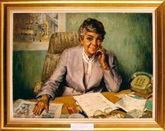
The Hon. Joan Child , 1988 by Charles William Bush (1911‒1989)
Image courtesy of Historic Memorials Collection, Parliament House Art Collection, Canberra ACT
|
|
1988
|
Resolution acknowledges prior occupation
|
|
| |
On the first sitting day in the new building on 22 August 1988, the Prime Minister the Hon. Bob Hawke (ALP, Member for Wills, Vic., 1980‒92) moves that a resolution be made by the House of Representatives, acknowledging the prior occupation of land by Aboriginal and Torres Strait Islander people, and acknowledging their dispossession and the denial of their citizenship rights.
The resolution:
(1) acknowledges that:
(a) Australia was occupied by Aborigines and Torres Strait Islanders who had settled for thousands of years before British settlement at Sydney Cove on 26 January 1788;
(b) Aborigines and Torres Strait Islanders suffered dispossession and dispersal upon acquisition of their traditional lands by the British Crown; and
(c) Aborigines and Torres Strait Islanders were denied full citizenship rights of the Commonwealth of Australia prior to the 1967 Referendum;
(2) affirms:
(a) the importance of Aboriginal and Torres Strait Islander culture and heritage; and
(b) the entitlement of Aborigines and Torres Strait Islanders to self-management and self-determination subject to the Constitution and the laws of the Commonwealth of Australia; and
(3) considers it desirable that the Commonwealth further promote reconciliation with Aboriginal and Torres Strait Islander citizens providing recognition of their special place in the Commonwealth of Australia. [4]
Although the resolution is passed by the House, the Government and Opposition are unable to agree on its wording, preventing it from having bipartisan support. [5]
|
|
|
1988
|
Proclaiming Acts
|
|
| |
On 27 September 1988 the Senate orders the tabling of a list of provisions of Acts not proclaimed, a statement of reasons for the failure to proclaim them and a timetable for their operation. [6]
This order follows concern about delays in Acts being proclaimed or not being proclaimed at all. As Odgers notes:
Under section 5 of the Acts Interpretation Act 1901, a bill which has been assented to by the Governor-General comes into operation as a law on the 28th day after the Governor-General's assent, unless the bill specifies another day. Most bills specify the day of assent as the day of commencement, but some specify a particular date. Many bills provide that all or some of their provisions are to commence on a day specified by the Governor-General in a proclamation. Such a provision allows the government to delay the operation of a statute until administrative arrangements or delegated legislation (see Chapter 15, Delegated Legislation) are in place to allow the statute to operate. While this kind of provision may be administratively convenient, it confers a great power on the executive government, and virtually allows the ministry to determine when, if ever, a law duly passed by the Parliament will have effect. [7]
The list is presented to the Senate on 24 November 1988. In the debate that follows, senators express their concern over delays in proclaiming Acts and the reasons given for those delays, noting that legislation stated by ministers to be urgent at the time of its passage through the Senate is often not proclaimed for months or years after assent. On the following day, the Senate passes a further resolution requiring such a list and associated statement to be presented to the Senate on or before 31 May and 30 November each year. This requirement is subsequently included in Senate standing order 139, and amended in 1999 to require reports to be submitted once a year.[8]
|
|
|
1988
|
ABC radio broadcasts
|
|
| |
In November 1988 the ABC's radio broadcasting of the proceedings of the Commonwealth Parliament is moved to a new network of eight transmitters, establishing the Parliamentary Broadcasting Network. It enables the proceedings of Parliament to be heard in all capital cities and Newcastle. [9]
The ABC has been permitted to broadcast the proceedings of the two Houses of the Parliament since 1946 in accordance with theParliamentary Proceedings Broadcasting Act 1946 . Australia's was the second national parliament of the Commonwealth to introduce radio broadcasting of its proceedings, New Zealand having commenced in 1936. [10]
|
Listen: A broadcast by the Australian Broadcasting Commission of the proceedings in Parliament 10 July 1946. This is the first time in the history of this Commonwealth that the regular day to day proceedings of Parliament have been on the air. Parts 2 and 4 cover Question and Answer Time in the House of Representatives (MP3 28MB)
Duration 30:17
From the collection of the National Film and Sound Archive of Australia, No. 228694
Listen: A broadcast by the Australian Broadcasting Commission of the proceedings at Question time in the Senate, Parliament, 17 July 1946 (MP3 17MB)
Duration 18:20
From the collection of the National Film and Sound Archive of Australia, No. 228170
|
|
1988
|
Australian Capital Territory (Self-Government) Act 1988
|
|
| |
On 6 December 1988 the Australian Capital Territory (Self-Government) Act 1988 is enacted by the Commonwealth, providing for a fully elected legislature to make statutory law for the ACT, an executive, and an independent court system.
|
|
|
1989
|
40th anniversary of Australian citizenship
|
|
| |
Australian Parliament House hosts an Australian citizenship ceremony commemorating the 40th anniversary of Australian citizenship.
|
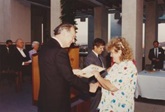
40th anniversary of first Australian citizenship ceremony held at Parliament House, Canberra. Award is presented to the recipient by Governor General, Sir Ninian Stephen, 1989
Image courtesy of National Archives of Australia
|
|
1989
|
First marriage in Parliament House
|
|
| |
On 31 March 1989 the Hon. Peter Staples (ALP, Member for Diamond Valley, Vic., 1983‒4 and Jagajaga, Vic., 1984‒96) and Jeanette Bourke are married in the Mural Hall of the new building. Few wedding ceremonies have been held in Parliament House but the marble foyer and staircases become a popular location for wedding photographs. [11]
|
|
|
1989
|
Construction phase ends
|
|
| |
The Formal Gardens for the New Parliament House are completed in April 1989, and a public ceremony marks the end of the construction phase. The Government endorses a proposal to protect the design integrity of the building. [12]
|
|
|
1989
|
Tiananmen Square memorial service
|
|
| |
Following events in China's Tiananmen Square, Prime Minister the Hon. Bob Hawke (ALP, Member for Wills, Vic., 1980‒92) conducts a memorial service in the Great Hall. He reads a cable from the Australian embassy in Beijing describing the events in Tiananmen Square five days earlier on 4 June 1989, then scraps his prepared speech and pays tribute to 'acts of indescribable bravery' of the estimated 2000 demonstrators, many students, who died during the incident. His government subsequently grants visas to 42 000 Chinese students, enabling them to stay permanently in Australia. [13]
|
|
|
1989
|
Speaker resigns
|
|
| |
The Hon. Joan Child (ALP, Member for Henty, Vic., 1974‒5 and 1980‒90), the first female Speaker in the Commonwealth Parliament, resigns from her role on 28 August 1989.
She served as Speaker when the Commonwealth Parliament moved from the Provisional Parliament House to the Permanent Parliament House in June 1988. The Hon. Leo McLeay (ALP, Member for Grayndler, NSW, 1979‒93; Member for Watson, NSW, 1993‒2004) is elected as Speaker on 29 August 1989, and he serves until 8 February 1993.
|
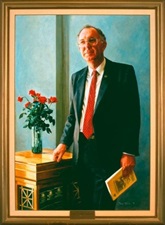
The Hon. Leo Boyce McLeay , 1991 by David Thomas (1951‒)
Image courtesy of Historic Memorials Collection, Parliament House Art Collection, Canberra ACT
|
|
1989
|
Protest in the chamber
|
|
| |
On 31 August 1989, a person jumps from the main public gallery in the House of Representatives into the chamber and is removed but not charged.
Whilst criminal law applies within Parliament House, it has previously proven difficult to charge 'strangers' with creating a disturbance until the Parliamentary Privileges Act 1987 and Parliamentary Precincts Act 1988 provide clarity on the legal basis for bringing charges against such people. [14]
|
|
|
1989
|
Impact of new building on Parliament
|
|
| |
Greg McIntosh, Political Science Fellow of the Australian Parliament 1988-9, publishes his APSA-Parliamentary Fellow Monograph Rounding up the Flock? Executive dominance and the new Parliament House in which he analyses the impact of the new building on the relationship between the Parliament and the Executive. [15]
|
|
|
1989
|
Referral of bills to Senate committees
|
|
| |
On 5 December 1989, following a recommendation by the Select Committee on Legislation Procedures in December 1988, the Senate adopts resolutions providing for the systematic referral of bills to legislative and general purpose standing committees, to come into effect in August 1990. [16]
This is a significant refinement to the modern parliamentary committee system established in 1970, and enables Senate committees to have a greater role in the consideration of legislation. The Senate committee system is restructured in October 1994, September 2006 and again in May 2009. [17]
|
|
|
1989
|
Private member's bill passed
|
|
| |
Senator Janet Powell (AD, Senator for Victoria 1986‒93) becomes the first woman in either House to have a private member's bill passed by both houses.
The bill, introduced on 31 August 1989, becomes an Act on 28 December 1989 as the Smoking and Tobacco Products Advertisements (Prohibition) Act 1989. [18]
|
|
|
1990
|
36th Parliament opened
|
|
| |
The Governor-General, the Hon. Bill Hayden, opens the 36th Parliament on 8 May 1990. It is the first official opening of the Australian Parliament since the move to the permanent building in 1988, and follows the Commonwealth election held on 24 March 1990 in which the ALP, led by Hon. Bob Hawke (ALP, Member for Wills, Vic., 1980‒92), retains government. [19] The ALP leadership changes in 1991 when the Hon. Paul Keating (ALP, Member for Blaxland, NSW, 1969‒96) becomes Prime Minister, succeeding Bob Hawke who leaves parliament on 20 February 1992.
|
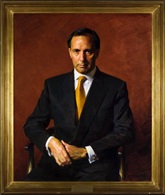
The Hon. Paul J Keating , 1997 by Robert Hannaford (1944‒)
Image courtesy of Historic Memorials Collection, Parliament House Art Collection, Canberra ACT
Read: Governor-General’s speech at opening of 36th Parliament
|
|
1990
|
Senate Question Time televised
|
|
| |
Senate proceedings are televised for the first time on 21 August 1990, 34 years after the introduction of television in Australia. [20]
Senate resolves on 31 May 1990 to trial the televising of Question time in the Senate. The motion to authorise broadcasting is moved by Senator the Hon. Amanda Vanstone (LP, Senator for SA, 1984‒2007), who proposes a trial period from 21 August to 19 October 1990. [21] On 23 August 1990 the Senate also authorises the Senate committees to permit the broadcasting of their public proceedings. [22]
|
Watch: Senate proceedings televised for first time
Video courtesy of DPS Broadcasting, Parliament House
|
|
1990
|
Hansard computerised
|
|
| |
A major project is undertaken to computerise Hansard operations and, on 21 August 1990, material for Hansard is transmitted electronically to the Government Printer after processing by Hansard staff.
|
|
|
1990
|
Forest workers demonstrate outside Parliament House
|
|
| |
On 7 September 1990 forest workers arrive at Parliament House to demonstrate their support for a plan by the Minister for Resources, the Hon. Alan Griffiths (ALP, Member for Maribyrnong, Vic., 1983‒96), to allow logging in six new National Estate areas. The plan is opposed by the Minister for Environment, the Hon. Roslyn Kelly (ALP, Member for Canberra, ACT 1980‒95).
The forest workers begin dispersing on 14 September following a Cabinet decision to allow logging in another 15 National Estate areas and to bring forward the deadline for a final decision on permanent reserves. [23]
|
|
|
1990
|
Nelson Mandela visit
|
|
| |
On 23 October 1990 a lunch is held in the Great Hall of Parliament House to honour the leader of the South African anti-apartheid movement, Nelson Mandela.
Mandela was sentenced to life imprisonment in 1964 for plotting to overthrow the South African Government. He was released on 11 February 1990 after 27 years in prison, and emerged as the most significant black leader of the anti-apartheid movement in South Africa. He was awarded the Nobel Peace Prize in 1993 and was inaugurated as President of a democratic South Africa on 10 May 1994 following the end of the apartheid era. [24]
|
Read: Speech by Prime Minister the Hon. Bob Hawke at luncheon in honour of Nelson Mandela
|
|
1991
|
House of Representatives proceedings televised
|
|
| |
Question time in the House of Representatives is televised live for the first time on 13 March 1991. [25]
At the commencement of the 38th Parliament the House had agreed to the conditions for live broadcast and re-broadcast of the proceedings and excerpts of proceedings of the House, and of the Main Committee. The proceedings of the two Houses of the Parliament have been broadcast on radio since 1946 by the ABC, as required by the Parliamentary Proceedings Broadcasting Act 1946. Australia's was the second national parliament of the Commonwealth to introduce radio broadcasting of its proceedings, New Zealand having commenced in 1936. [26]
|
|
1991 |
Retirement of the Clerk of the House of Representatives |
|
| |
Mr Alan Browning, Clerk of the House of Representatives since July 1985, retires on 22 March 1991. The new Clerk is Mr Lyndal Barlin, who commences in the role on 23 March 1991. |
|
|
1991
|
Aboriginal Deaths in Custody
|
|
| |
On 9 May 1991 the Minister for Aboriginal Affairs, the Hon. Robert Tickner (ALP, Member for Hughes, NSW, 1984‒96) tables the National Report of the Royal Commission into Aboriginal Deaths in Custody.
The inquiry examined the circumstances involved in the deaths of 99 Aboriginal people and Torres Strait Islanders who had died whilst in custody between 1 January 1980 and 31 May 1989. The Royal Commission made 339 recommendations, with the final recommendation supporting the concept of a process of reconciliation. It concluded with:
All political leaders and their parties recognise that reconciliation between the Aboriginal and non-Aboriginal communities in Australia must be achieved if community division, discord and injustice to Aboriginal people are to be avoided. [27]
The Council for Aboriginal Reconciliation Act 1991 is passed in both Houses with unanimous support.
|
|
|
1991
|
Change of Prime Minister
|
|
| |
The Hon. Paul Keating (ALP, Member for Blaxland, NSW, 1969‒96) succeeds the Hon. Bob Hawke (ALP, Member for Wills, Vic., 1980‒92) as Prime Minister on 20 December 1991 following a change of ALP leadership.
|
|
| 1992 |
Sheep graze on roof |
|
| |
On 2 April 1992 about 100 merino sheep are brought to Parliament House to graze on the lawns covering the roof area as part of a promotional campaign for National Wool Day organised by Wilson Tuckey (LP, Member for O’Connor, WA 1980‒2010).
On the same day Opposition Leader, Dr John Hewson (LP, Member for Wentworth, NSW, 1987‒95), and the Hon. Simon Crean (ALP, Member for Hotham, Vic., 1990‒) conduct a wool auction in the Great Hall of Parliament House, in order to draw public attention to the plight of the Australian wool industry.[28] |
|
|
1992
|
Time limit in Senate
|
|
| |
In September 1992 time limits are adopted for the first time on questions without notice and answers during Question Time in the Senate. [29]
|
|
|
1992
|
Address by US President the Hon. George Bush
|
|
| |
A joint meeting of both Houses is proposed by resolution that the Senate and the House of Representatives will meet concurrently in the chamber of the House of Representatives on 2 January 1992 to hear the address of the President of the United States, the Hon. George Bush .[30]
President Bush is the first foreign head of state to address a joint meeting of the Commonwealth Parliament. The joint meeting is the first to be held in the new Parliament House, and is only the third joint meeting to be held in the history of the Parliament. Between the opening of the new building in 1988 and its 25th anniversary in 2013, the Australian Parliament receives addresses from eight foreign leaders. [31]
|
Watch: Address by the President of the United States of America
Video courtesy of DPS Broadcasting, Parliament House
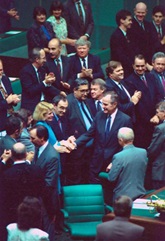
US President the Hon. George Bush meeting members of Parliament in the House of Representatives chamber, 1992
Image courtesy of National Archives of Australia
|
|
1992
|
Farmers protest
|
|
| |
More than 3000 farmers gather outside Parliament House to demonstrate against United States trade subsidies during the visit by US President the Hon. George Bush on 2 January 1992.
|
|
|
1992
|
Vehicle crashes into Parliament House
|
|
| |
On 12 August 1992, a man from Adelaide drives his four-wheel drive vehicle through the main front doors of Parliament House, knocking the doors off their hinges, scattering tourists and visitors, and stopping in the Great Hall.
The bomb squad and dogs search the vehicle and a shotgun and shells are found. Damage is estimated at $55,000. On 15 August four concrete bollards are installed between the columns under the front verandah at the main entrance of the building to prevent vehicles driving through. [32]
|
|
|
1993
|
Speaker resigns
|
|
| |
On 8 February 1993 the Hon. Leo McLeay (ALP, Member for Grayndler, NSW, 1979‒93 and Member for Watson, NSW, 1993‒2004) resigns from the Speakership of the House following accusations that he had made a false compensation claim an unsuccessful motion of no-confidence on 2 April 1992. The accusation is later shown to be incorrect. [33]
|
|
|
1993
|
37th Parliament opened
|
|
| |
The Governor-General, Mr Bill Hayden, opens the 37th Parliament on 4 May 1993, following the Commonwealth election held on 13 March 1993 in which the ALP led by the Hon. Paul Keating (ALP, Member for Blaxland, NSW, 1969‒96) retains government. [34]
|
Read: Governor-General’s speech at opening of 37th Parliament
|
|
1993
|
Change of Speaker
|
|
| |
On 4 May 1993 the Hon. Dr Stephen Martin (ALP, Member for Macarthur, NSW, 1984‒93 and Member for Cunningham, NSW, 1993‒2002) is elected as Speaker of the House of Representatives, succeeding the Hon. Leo McLeay.
|

The Hon. Stephen Paul Martin , 1995 by Wesley Barton Walters (1928‒)
Image courtesy of Historic Memorials Collection, Parliament House Art Collection, Canberra ACT
|
|
1993
|
Protest march by Indigenous Australians
|
|
| |
About 500 Indigenous Australians march to Parliament House on 27 September 1993 to protest against the government's Native Title Bill.
They burn a copy of the Commonwealth's draft legislation, and Aboriginal artist Michael Nelson Jagamara symbolically 'removes' a stone from the centre of his mosaic in the Parliament House forecourt as a protest against the proposed legislation. [35]
|
|
|
1993
|
Native Title Act 1993
|
|
| |
The passing of the Commonwealth's native title 'Mabo' legislation in the Senate at 11.58 pm on 21 December 1993 is greeted with applause from a packed gallery, following the longest debate in the Senate's history. The Commonwealth Native Title Act 1993 receives Assent on 24 December 1993
The marathon 'Mabo' debate extends into Saturday 18 December 1993, and is the first Saturday sitting of the Senate since 1959. The legislation is the result of a landmark majority judgment by the High Court of Australia in the Mabo v Queensland (No. 2) 1992 , which overturned the seventeenth century doctrine of terra nullius (no-one's land) on which British claims to possession of Australia were based. [36]
|
![Two Aboriginal men on beach, one with fishing spear [Eddie Mabo (left) and Jack Wailu on the Island of Mer in the Torres Strait Islands]](/-/media/08_Chronology/images/1988-1998/image044.jpg?h=113&w=166&hash=49CB5FDE6390B157887AF6678017B628)
Two Aboriginal men on beach, one with fishing spear [Eddie Mabo (left) and Jack Wailu on the Island of Mer in the Torres Strait Islands]
Image courtesy of National Archives of Australia
|
|
1994
|
New President of the Senate
|
|
| |
On 1 February 1994 the Hon. Michael Beahan (ALP, Senator for Western Australia, 1987‒96) is elected President of the Senate, succeeding Senator the Hon. Kerry Sibraa. He serves as President until 30 June 1996.
|
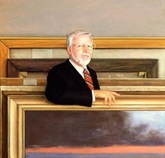
The Hon. Michael Eamon Beahan , 1998 by Bryan Westwood (1930‒2000)
Image courtesy of Historic Memorials Collection, Parliament House Art Collection, Canberra ACT
|
|
1994
|
Main Committee established
|
|
| |
The House of Representatives establishes a parallel chamber for debate called the Main Committee, which meets for the first time on 8 June 1994.
The House Standing Committee on Procedure recommends the establishment of a Main Committee (Legislation) in its October 1993 report About time: Bills, questions and working hours-inquiry into reform of the House of Representatives .[37] The new chamber is designed to extend opportunities for debate on non-contentious bills and speed up the legislative process, and allows private members further opportunities. The Main Committee is subsequently renamed the Federation Chamber on 2 February 2012 (see related milestone).
|
|
|
1994
|
Senate committee system restructured
|
|
| |
The Senate's committee system is restructured following a Procedure Committee report on the committee system.
The new system takes effect on 10 October 1994, with legislative and general purpose standing committees and estimates committees replaced by eight pairs of legislation and reference committees in each subject area. The legislation committees absorb the function of the former estimates committees in addition to undertaking inquiries into bills and the performance of government agencies. The references committees conduct inquiries into any other matters referred to them by the Senate. In 2006 the pairs of committees in each subject area are amalgamated, returning to pre-1994 arrangement for the legislative and general purpose standing committees until 2009 when the post-1994 structure is restored. [38]
|
|
|
1995
|
Forestry workers' protest
|
|
| |
More than 200 logging trucks blockade Parliament House on 30 January 1995 in protest over a forestry agreement negotiated by the Keating Government involving saving 509 forest areas from logging out of the 1 300 areas originally proposed by Senator John Faulkner as having conservation value. The blockade is lifted when Cabinet decides that the environmental assessment of the 509 areas would be completed within eight weeks. [39]
|
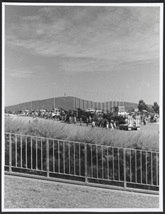
The logger blockade of Parliament House, Canberra, January 1995-some of the trucks in the forecourt
Image courtesy of National Library of Australia
|
|
1995
|
Interjector removed from Gallery
|
|
| |
A person interjecting from the House of Representatives Gallery is removed on 6 February 1995.
As this is the second time the person has been removed for interjecting, the Speaker orders the person be excluded permanently from the galleries. [40]
|
|
|
1995
|
Buddhist Mandala circle
|
|
| |
Tibetan Buddhist monks complete a two-metre Kalachakra Mandala circle in Parliament House on 27 February 1995.
Called the 'wheel of time', it is an intricate work depicting 722 Buddhist deities created by placing coloured grains of sand, one at a time, on a table. The construction takes a month, after which, 'in a lesson of life's impermanence', the work is destroyed. [41]
|
|
|
1995
|
Iron dogs exhibition |
|
| |
Artist Ingo Kleinert installs his 'The eye of the dog' exhibit involving 400 corrugated iron dogs on the front lawn of Parliament House to herald the Canberra National Sculpture Forum.
The dogs are moved every four days to enable the grass to be cut, and one of the dogs is acquired for the Parliament House Art Collection.
|
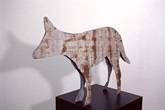
Tin Dog (from installation The Eye of the Dog), 1995 by Ingo Kleinert (1941‒))
Image courtesy of Parliament House Art Collection, Canberra ACT
|
|
1995
|
Parliament House Site Book
|
|
| |
The Joint House Department publishes the first edition of the Parliament House Site Book to provide guidelines on access and safety in relation to the building for staff, contractors and consultants.
|
|
|
1996
|
Non-members' bar closes
|
|
| |
The non-members' bar in Parliament House is closed on 1 January 1996 as part of a changeover in contract providers for catering services to the Parliament. [42]
The space is eventually occupied by a childcare centre. The Joint House Department had reported to Senate Estimates as early as 1989 that the new non-members' bar was running at a loss, and the decision to close in 1996 was due to lack of patronage:
Federal Parliament has been without a bar for nearly a decade - since the antiseptic "non-members bar" closed its doors. It had failed dismally to attract MPs and staff who had migrated from the old Parliament, where documents and punch-ups were freely exchanged in the grand old bar, and democracy flourished. [43]
|
|
|
1996
|
38th Parliament opened
|
|
| |
The Governor-General, Sir William Deane, opens the 38th Parliament on 30 April 1996, following the Commonwealth election held on 2 March 1996 in which the Liberal‒Nationals Coalition, led by the Hon. John Howard (LP, Member for Bennelong, NSW, 1974‒2007), wins government after 13 years in Opposition. [44]
|
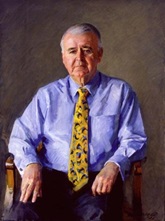
The Hon. Sir William Patrick Deane, AC KBE, 2001 by Robert Hannaford (1944‒)
Image courtesy of Historic Memorials Collection, Parliament House Art Collection, Canberra ACT
Read: Governor-General’s speech at opening of 38th Parliament
|
|
1996
|
Change of Speaker
|
|
| |
On 30 April 1996 the Hon. Robert Halverson (LP, Member for Casey, Vic., 1984‒98) is elected as Speaker of the House of Representatives, succeeding the Hon. Dr Stephen Martin.
|
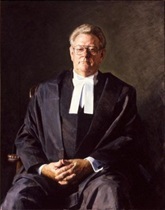
The Hon. Robert (Bob) George Halverson, 1998 by Robert Hannaford (1944‒)
Image courtesy of Historic Memorials Collection, Parliament House Art Collection, Canberra ACT
|
|
1996
|
Gun control protest
|
|
| |
A group of people stand in front of the nation's legislature on 10 May 1996 to call for changes to Australia's gun control laws and to express their sorrow for the Port Arthur massacre in Tasmania on 28 April 1996, in which 35 people die and 21 people are injured in a mass shooting. [45] This follows a motion from the Prime Minister, the Hon. John Howard, on 30 April 1996 expressing the House of Representatives’ sympathies to the families and friends of those killed and injured, and urging all governments to work co-operatively in response to the issues it raises.
The protest coincides with a special firearms meeting of the Australasian Police Ministers' Council Ministers held in Canberra. The National Firearms Agreement is the first of the national agreements in response to the mass shootings that occurred at Port Arthur in Tasmania. The agreement is implemented by the states and territories in stages in the following years, including provision for a 12-month national amnesty and a compensation buyback scheme. Together with the changes to state and territory firearm and weapons laws, the Commonwealth Parliament passes legislation relating to the import and export of firearms and the cross-border trafficking of firearms. [46]
|
Watch: The Prime Minister, the Hon. John Howard MP, speaking about the Port Arthur massacre in the House of Representatives, 30 April 1996
Video courtesy of DPS Broadcasting, Parliament House
|
|
1996
|
Corridor parties protest
|
|
| |
Senators Natasha Stott Despoja (AD, Senator for SA, 1995‒2008), the Hon. Rosemary Crowley (ALP, Senator for SA, 1983‒2002), the Hon. Nick Bolkus (ALP, Senator for SA, 1981‒2005), the Hon. Chris Schacht (ALP, Senator for SA, 1987‒2002) and Alan Ferguson (LP, Senator for SA, 1993‒2011) form a conga line down a corridor of Parliament House in defiance of a ban on corridor parties imposed by the Joint House Department. [47]
|
|
|
1996
|
Parliament House riot
|
|
| |
The 'Parliament House riot' erupts outside Parliament House on 19 August 1996.
The Eureka flag and Aboriginal flag are hung across the Coat of Arms. During the peaceful rally organised by the Australian Council of Trade Unions to protest against reforms proposed in the Howard Government's Workplace Relations Bill, a group breaks away and forces entry into the building, causing damage to people and property. [48]
|
|
|
1996
|
First woman President
|
|
| |
Senator the Hon. Margaret Reid AO (LP, Senator for the ACT, 1981‒2003), becomes the first woman to be appointed as President of the Senate on 20 August 1996, replacing the Hon. Michael Beahan.
She holds the position until 18 August 2002 and is succeeded as President by the Hon. Paul Calvert (LP, Senator for Tasmania, 1987‒2007) on 19 August 2002 following her resignation from the role.
|
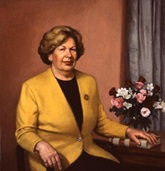
The Hon. Margaret Elizabeth Reid, 1999 by Tom Alberts (1962‒)
Image courtesy of Historic Memorials Collection, Parliament House Art Collection, Canberra ACT
|
|
1996
|
Address by US President the Hon. Bill Clinton
|
|
| |
On 20 November 1996 United States President the Hon. Bill Clinton addresses a joint meeting of parliament, following his re-election to a second term of office. He is the second US president to do so. [49]
|
Watch: Address by the President of the United States, the Hon. Bill Clinton
Video courtesy of DPS Broadcasting, Parliament House
|
|
1997
|
Bringing them home report tabled |
|
| |
The Attorney-General and Minister for Justice, the Hon. Daryl Williams (LP, Member for Tangney, WA 1993‒2004) tables the Human Rights and Equal Opportunity Commission's report of the National Inquiry into the Separation of Aboriginal and Torres Strait Islander Children entitled Bringing them home, in the House of Representatives on 26 May 1997.
The report deals with the separation of Aboriginal and Torres Strait Islander children from their families, and leads to continuing public and parliamentary debate about the implementation of its recommendations including an apology and compensation for those affected. The House does not agree to a full apology, but expresses deep and sincere regret for unspecified past injustices as part of a Motion of Reconciliation on 26 August 1999. It subsequently agrees to a formal apology on 13 February 2008 (see related milestones). [50]
|
|
1997 |
Former Speaker Sir William Aston dies |
|
| |
Former Speaker the Hon. Sir William Aston, KCMG (LP, Member for Phillip, NSW, 1955–61 and 1963–72), dies on 21 May 1997 at the age of 80. He served as Speaker from 21 February 1967 to 2 November 1972.
The House of Representatives pauses to remember former Speaker Aston with a condolence motion moved by Prime Minister Howard on 26 May 1997. The Senate also remembers former Speaker Aston with a condolence motion moved by the Leader of the Government in the Senate, Senator the Hon. Robert Hill, on 26 May 1997. |
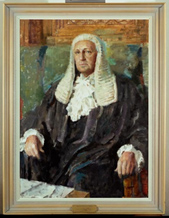
The Hon. William John Aston, 1968 by William Pidgeon
(1909–81)
Image courtesy of Historic Memorials Collection, Parliament House Art Collection, Canberra ACT |
1997 |
Retirement of the Clerk of the House of Representatives |
|
| |
Mr Lyndal Barlin AM, Clerk of the House of Representatives since March 1991, retires on 26 July 1997. The new Clerk is Mr Ian Harris, who commences in the role on 27 July 1997. |
|
|
1997
|
Sea of Hands demonstration
|
|
| |
Australians for Native Title and Reconciliation organise the 'Sea of Hands', with over 60 000 individually signed plastic hands placed in the front lawn of Parliament House on 12 October 1997 as a gesture of support for reconciliation.
The 'Sea of Hands' is a public protest opposing the Howard Government's proposed amendments to the Native Title Act 1993, and remains one of the most spectacular visual demonstrations of public sentiment in the history of the permanent Parliament House. [51]
|
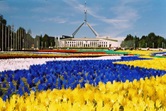
The Sea of Hands
Image courtesy of ANTaR Vic
|